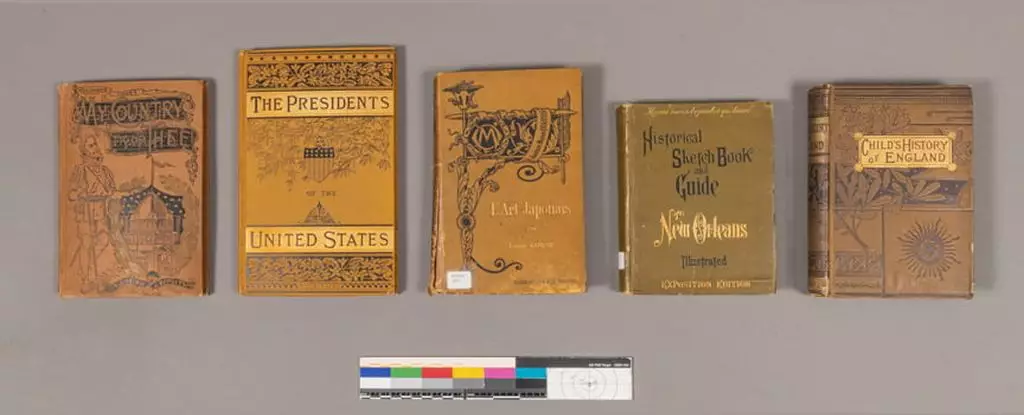Recent analysis of Victorian-era books has shed light on the presence of toxic materials such as lead and chromium in the dyes used to color the cloth-bound covers. While the average reader might not be at high risk of exposure simply from handling these books, individuals who frequently come into contact with antique books, such as librarians and book dealers, are more susceptible to potential harm. The research findings were presented at the Fall meeting of the American Chemical Society, raising concerns about the safety of these historical artifacts.
During the 19th century, a significant shift occurred in the production of dyes, with the introduction of new classes of synthetic materials. These dyes, which included substances like arsenic and aniline, produced vibrant and long-lasting colors that were previously only achievable through natural ingredients. However, the use of these heavy metals in dyes also led to health risks, particularly for those involved in the manufacturing process. The poisonous nature of some of these dyes resulted in tragic consequences, prompting a shift towards safer alternatives.
In more recent times, the Poison Book Project spearheaded by art conservationists has identified various vintage books dyed with toxic pigments containing substances like arsenic. This alarming discovery has raised awareness about the potential health hazards associated with handling these antiquated books. In response to these concerns, researchers at Lipscomb University conducted a series of tests on brightly colored books from their own library collection to assess the presence of toxic dyes.
Using advanced techniques such as X-ray fluorescence, inductively coupled plasma optical emission spectroscopy, and X-ray diffraction, the researchers were able to detect high concentrations of lead and chromium in some of the book samples. This raised red flags regarding the safety of these books and prompted immediate action to remove them from circulation. The significant levels of these toxic metals, surpassing acceptable exposure limits, underscored the potential health risks posed by antique books colored with hazardous dyes.
The revelation of toxic dyes in antique books serves as a wake-up call for book conservationists, librarians, and collectors alike. The need to prioritize the safety of individuals interacting with these historical artifacts is paramount, requiring proactive measures to mitigate health risks. By raising awareness about the presence of toxic materials in vintage books, researchers hope to promote safer handling practices and preservation strategies for these valuable pieces of history.
The uncovering of toxic dyes in Victorian-era books highlights the importance of understanding the potential health risks associated with handling these historical artifacts. By leveraging scientific analysis and innovative research techniques, scholars are shedding light on hidden dangers lurking within the pages of antique books. Moving forward, increased vigilance and precautionary measures are necessary to safeguard the well-being of individuals who come into contact with these toxic dyes, ensuring that the joy of exploring the past does not come at the expense of one’s health.


Leave a Reply